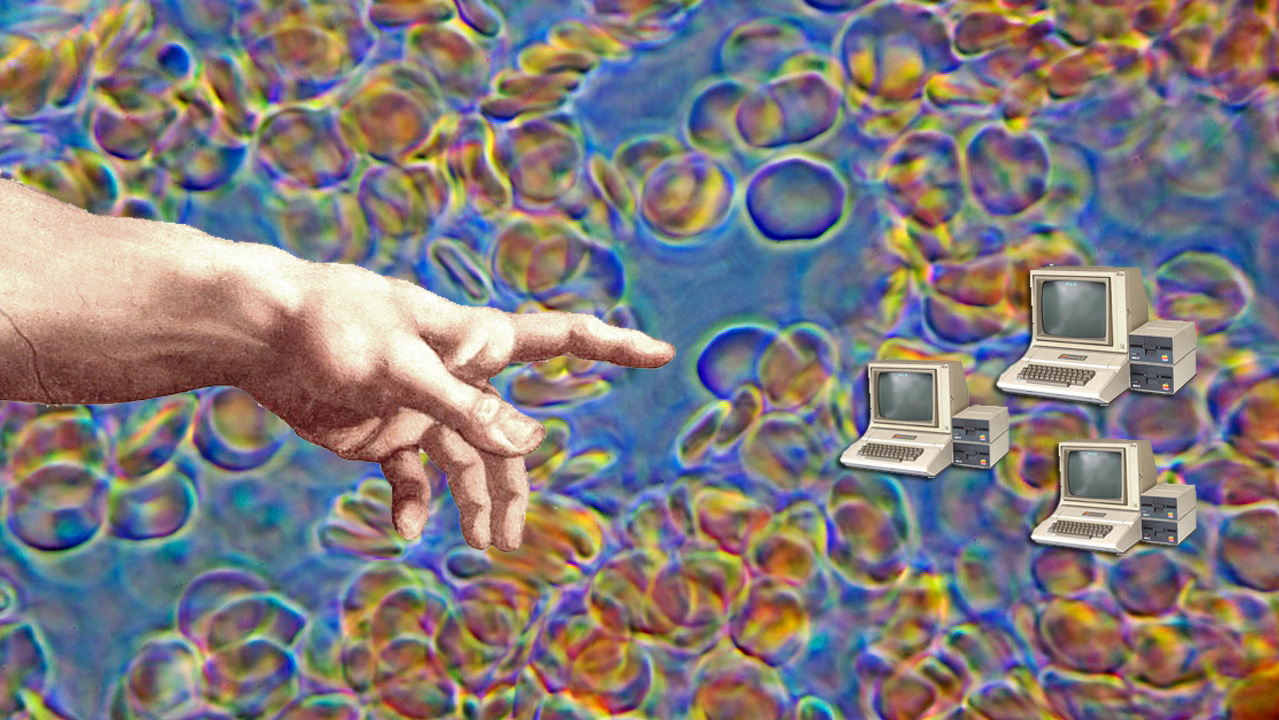Imagine living in a permanent augmented reality. Imagine walking around and all that you cast your gaze upon emits an infinite amount of metadata. All the images, maps and information associated with whatever you’re looking at becomes accessible to you in real time. Imagine doing it without looking quite so douche-y with those Google Glasses on and avoiding all the weird body posture they’d likely foster.
Scientists, real ones, with lab coats and test tubes, ones that get written about in peer-reviewed journals like Nature, have developed biological cells and DNA that can be programmed to function like computers, performing logical operations and storing data.
“These developments will more readily enable one to create programmable cells with decision-making capabilities for a variety of applications,” says James Collins at Boston University, a pioneer in the field of synthetic biology.
Full-blown embedded bio-App computing is likely a ways away, but the boundary between man and machine has just gotten a lot smaller. Smartwatches should suffice ’til then.



